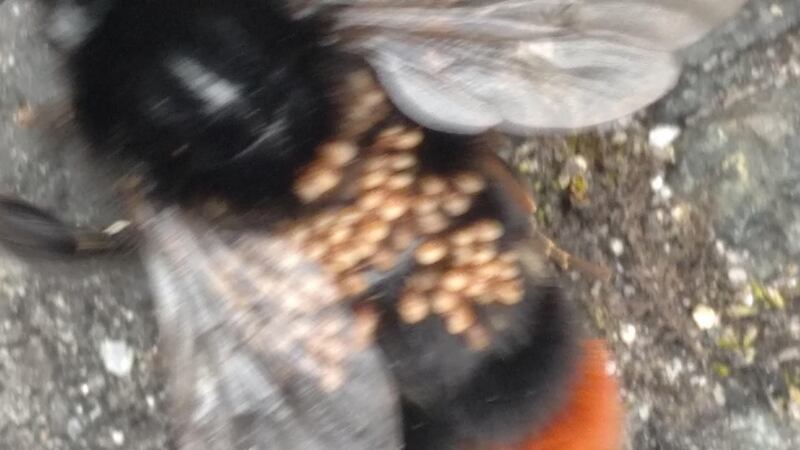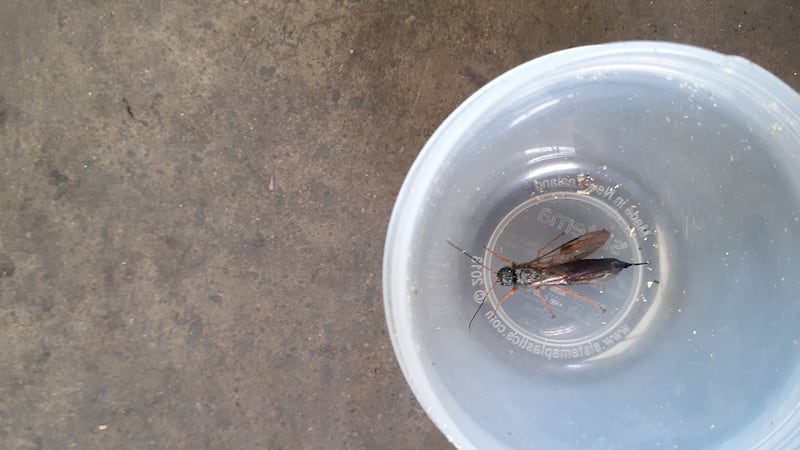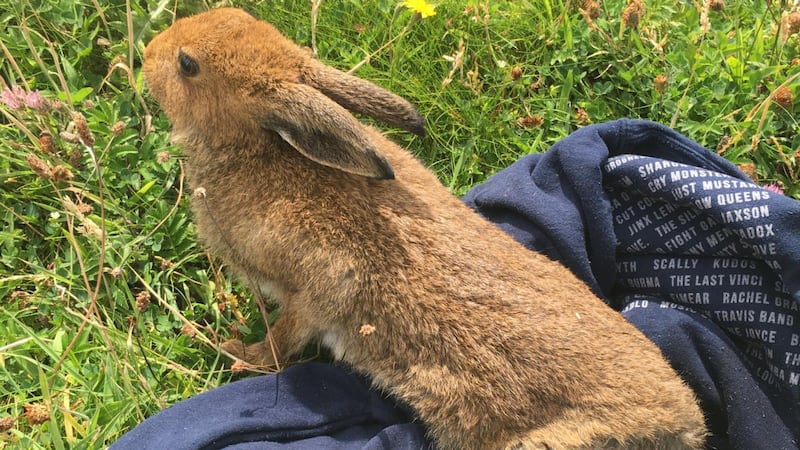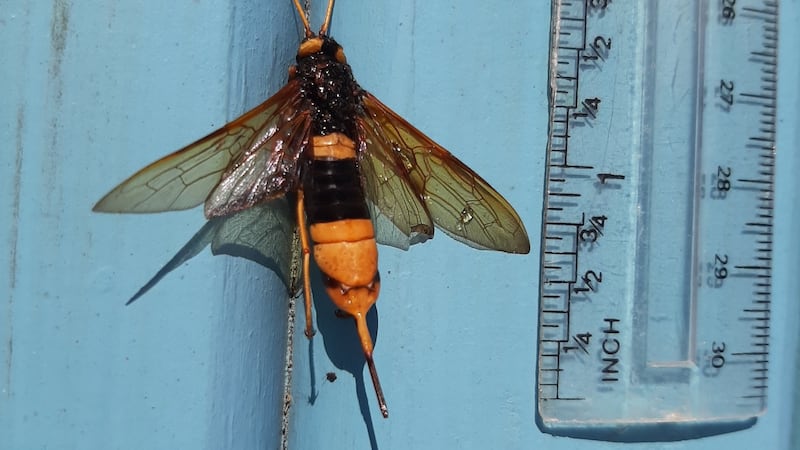This little bird is running under my raspberry canes eating fallen fruit. It looks like a robin but has no red breast. Colette McCarthy This is a lovely picture of a juvenile robin, recently fledged. It won’t get its red breast feathers for a while.

Myself and the kids, out walking, spotted this bumblebee on the road. We think it's carrying eggs somewhere and can't fly because the eggs are too heavy. Ann Jordan This red-tailed bumblebee is indeed carrying a load of mites on its back. These feed on pollen and wax in the bee's nest and are using the bee for transport. But if the load becomes too heavy, then the bee cannot fly.

Could you identify this insect? It landed on me; never saw one before. Colm Kinsella This is an ichneumon fly, which parasitises the larvae of other insects. It lays eggs into their living bodies, which it pierces first with the long ovipositor sticking out at the rear of its abdomen.

On the rocks just below the path to Valentia lighthouse we spotted a hare unable to move. I retrieved it but it appeared unable to move its hind legs. A local vet confirmed its back was broken and it was paralysed, so sadly he put it to sleep. Have you any explanation as to how it could have got there or what might have happened to it? Louise Taaffe Hares form part of the prey of both golden and sea eagles. This one may have been dropped from a height by an eagle unable to carry it and the fall broke its back.

I found this wasp-like insect. What is it please? Eileen Dennison It is a woodwasp, also called a horntail. It drills into timber with the long ovipositor at the rear of its abdomen and lays its eggs deep inside. It cannot sting.
Have you a nature query, observation or photo you would like to share with The Irish Times? Submit it, with location of the image, via our website irishtimes.com/eyeonnature



















